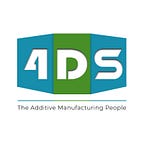Heat sinks material for 3D printing: Copper over Aluminium
By Yash Gautam
Deciding which 3D printing technology to use might be tough, but it’s the most important step to assure your 3D printed object will meet your expectations.
Aluminium is the most commonly used material for developing heat sinks which can serve different purposes in various industries. But when it comes to 3D printing, Cu takes over Al. Al specifically requires die casting in order to undergo the 3D-printing which is way more expensive than other processes.
Copper over Aluminium
It has been a long debate for the past half a decade which material is better suited for 3D printing of heat sinks. The choices are cut down to these two common materials; Copper and Aluminum. It is known that thermal conductivity of copper is better than aluminium and the specific heat of copper is less than that of aluminium. So it is clear that copper will transfer more heat. But aluminium is preferred in automobile radiators and many other heat transfer applications over copper. But, in spite of that fact, why is the demand for Copper higher rather than for Aluminium in 3D-printing?
Aluminum heat sinks are generally made up from expensive manufacturing techniques such as die casting and CNC machining, which are indeed a time-taking process and requires more amount of labor as compared to 3D printing. Copper should be the key material used for 3D printing, because of the following aspects;
- They can be used in instances where higher heat conductivity outweighs the available weight savings.
- if you heat one end of a piece of copper, the other end will quickly reach the same temperature
- It is used in many heating applications because it doesn’t corrode and has a high melting point.
Although the cost and weight savings are key factors in the popularity of aluminum over copper for heatsinks. But that copper is better suited for 3D-printing as it provides more thermal conductivity and there is no such extra hassle of acquiring any other technology or preparing the die, as it is required for 3D-printing with aluminium. So the overall expense of the project is not hampered and that is the main reason copper is preferred to make for the production.
Conclusion
Introducing Additive Manufacturing to your production might be a revolutionary step. The variety of materials and 3D printing technologies is amazing, no matter if you would like your metal print to be a strong and high-temperature resistant prototype or a beautiful and delicate ring. Make sure you know what properties your 3D printed object should have and select the material accordingly.
To know more about it, contact us for 3D printers and services in India contact us at www.4dsindia.com or Email us at info@4dsindia.com
